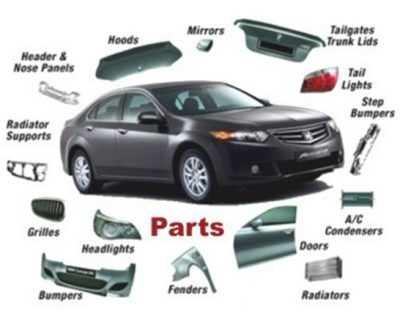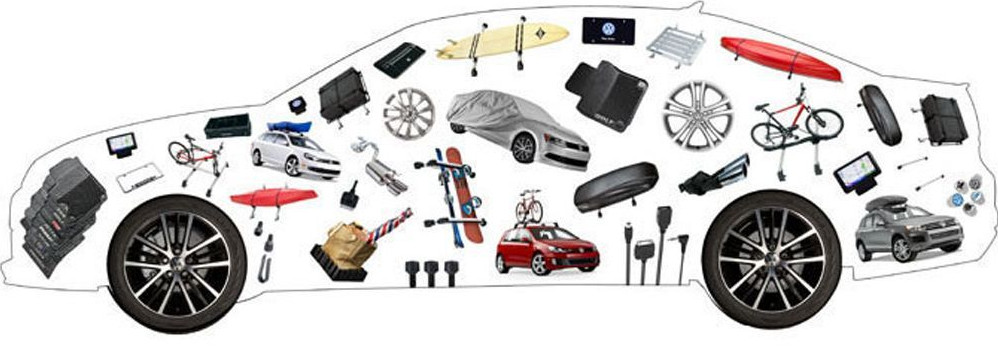20 Handy Suggestions For Choosing Car Parts
20 Handy Suggestions For Choosing Car Parts
Blog Article
Ten Tips To Think About On The Quality And Source Of Auto Parts
You can make better decisions by implementing these guidelines:
1. Choose OEM vs. Aftermarket
Select OEM (Original Equipment Manufacturing) or aftermarket components.
Pros:
OEM parts offer the best fitting and performance.
The price of premium aftermarket parts is affordable.
Cons:
OEM parts are typically more expensive.
Some aftermarket components aren't as durable as OEM parts.
2. Look for Standards and Certifications
Tip Consider items that are certified by organizations like SAE, ISO, or TUV.
Pros: It assures that safety standards are met and it ensures performance.
Cons: Parts that have been certified can cost more and are difficult to find for older cars.
3. Examine the credibility of the manufacturer
Tip Choose well-known and trusted brands with a solid track record.
Pros Lowers the chance of poor-quality, prematurely failing components.
Cons: copyright products could be available for brands that are reputable. This needs extra attention.
4. Reputable Retailers: Buy Online
Tips: Purchase parts from authorized dealers or through trusted online platforms.
Pros: Trustworthy retailers usually offer warranties and a guarantee of quality.
Pros: The prices are more expensive than third-party vendors who are not confirmed.
5. Materials and Construction Quality
Examine the resistance to corrosion and durable materials.
Cons: Doesn't provide durability or long-term performance.
Cons: It's not always possible to examine the items purchased online prior to purchasing.
6. Take into consideration Refurbished or Remanufactured products
A tip: Refurbished components are a good option for expensive components like transmissions and engines.
Pros: Sourced from reputable suppliers, it's affordable and doesn't compromise quality.
Cons: Inconsistent quality depending on the refurbishing process.
7. Avoid copyright
TIP: Make sure you verify parts numbers, logos and packaging to avoid fakes.
Cons: You are protected from installing parts of poor quality or unsafe.
Con: Identifying fakes takes focus on detail and knowledge.
8. Make sure you have a Warranties Checklist
Tip: Prioritize components that come with a warranty to cover defects or failures.
Cons: Doesn't offer security.
Cons: Filing warranty claims may take time if problems occur.
9. Read Customer Reviews and Ratings
Online reviews can provide important data on the durability, performance and fitment of a product.
Pros: Helps identify reliable products and eliminate subpar ones.
Con: Some reviews could be biased or untrustworthy.
10. Be aware of regional differences in quality
Tips: Be aware of the fact that components made in different regions could have a difference in the quality standards.
Cons: It is not the most affordable alternative, but it will offer you the best product on the market.
Cons: Imports of top-quality products may be more costly or may take longer to arrive.
Final Thoughts: Weighing the Benefits and Cons
Pros:
High-quality parts will guarantee security, reliability and efficiency.
Trustworthy providers minimize the risk of defective parts warranties, copyright parts, and other issues.
Cons:
The price of premium components is greater initially.
It takes extra time and energy to verify authenticity and the quality.
You can be sure that your vehicle performs well and maintain its value as time passes by balancing quality of your parts as well as their source. Check out the top degmaisijuma sagatavošana car parts par alpina cars for site tips including parts & parts, nty parts, spare parts by vin code, nty parts, auto salvage locations, dar parts, 11 auto parts, on auto parts, rover breakers, parts and parts and more.
Top 10 Tips On How To Maintain And Care For The Car's Parts
Be aware of the longevity of the parts and their maintenance requirements when purchasing these parts. This could be a major factor in the expense and durability of the vehicle. Here are 10 important guidelines, with pros and cons.
1. The Parts' Lifespan
Tip: Check the lifespan of a component by comparing it against the recommendation of the manufacturer and experience of the user.
Pros: It allows you to determine when a component will need replacement, and is used for proactive maintenance.
Cons: Lifespan estimates can vary depending the driving habits, environmental conditions and the level of maintenance.
2. Check for Wear and Tear Resistance
Tips: Choose components that are resistant to wear. This is crucial when it comes to components that have high stress, like brakes and belts.
Reduces the requirement for replacement components and maintenance expenses.
Cons: The initial costs of high-durability parts can be higher.
3. Be aware of the Material Quality
Tip: Choose parts made with durable materials such as carbon composites, stainless-steel and alloys with reinforced reinforcement.
Advantages: Materials with higher quality will last longer, and is more resistant to harsh conditions.
Cons: Premium materials can make it more expensive for the part.
4. Look for components that are resistant to corrosion.
TIP: Pick corrosion-resistant parts in particular for components that are exposed moisture, like exhaust systems, brake parts, or suspension components.
Pros: Extends the lifespan of the component, particularly in areas with high humidity or road salt.
Cons: Corrosion-resistant parts are more expensive.
5. Examine the Return and Warranty Policy
Check the warranty to see the warranty covers damaged parts or premature failures due issues with durability.
Advantages: A solid warranty gives you peace of mind and can save costs in case the part breaks down in a hurry.
Cons: Some warrantys may have limitations, or require that certain conditions be fulfilled.
6. Think about the Maintenance Frequency
Tip - Choose parts with minimum requirements for maintenance, such as sealed or low-maintenance components (e.g. maintenance-free batteries sealed bearings).
Cons: It increases maintenance costs and time.
Cons: Items with low maintenance can be more expensive upfront or have less repair ability.
7. Choose Parts That Are Easy to Repair or Replace
Tip: Select parts that are easy to replace or repair because this can reduce maintenance costs.
It is easy to fix or replace it, thereby saving time and money.
Cons: Some components designed for easy replacement may not be durable as their complicated counterparts.
8. Check out user reviews and feedback
To evaluate the reliability of the part, check online reviews or speak to a reputable mechanic.
Pros: Provides real-world information on the long-term durability of the component and the requirements for its maintenance.
Cons: Reviews tend to be subjective and may not reflect your exact usage or circumstances.
9. Take into consideration Reputation
Tip: Buy parts from reputable manufacturers. They have a good reputation for making reliable, durable automobile parts.
Pros: Trusted brands tend to make durable, high-quality components that last for years.
Pros: Branded components tend to be more expensive than alternatives that are less well-known.
10. Maintain Durability and Cost
TIP: Putting durability first is crucial, however you should also consider whether the item will be within your budget. Sometimes, it's essential to make a choice between quality and price particularly with parts that aren't critical.
Cons: Doesn't overspend on parts that aren't essential.
Cons The cost of saving too much on components that aren't essential can lead to more frequent replacements and increased expenses.
Final Thoughts
Take into consideration the importance of durability and maintenance as a Pro:
Cost-Effective: Durable components reduce the need for frequent replacements, leading to long-term savings.
Reduce time and costs by using parts that are low maintenance.
Reliability: Choosing high-quality parts ensures fewer breakdowns and a more dependable vehicle.
Cons of overlooking the durability and maintenance
Initial Cost: High-quality and durable components are usually more expensive up front.
Underestimating the length of time. Even high-quality parts can break down, and neglecting regular maintenance can result in problems.
Complexity: Highly durable parts could be difficult to repair or replace and this can increase the cost of labor.
These suggestions can assist you choose components that are not only robust, but also cost-effective and simple to maintain for the duration of your vehicle. View the top rated auto-chemical parts for ford cars for blog advice including auto rezerves dalas riga, volvo v70 part numbers, bmw dismantlers, nearby auto salvage, spare part auto, parts & parts, at auto parts, land auto parts, at auto salvage, bmw dismantlers and more.